In a little more than four years, World War I produced more than nine million battlefield deaths.
The conflict consumed most of a generation of European men.
Leaning Toward Isolationism
The August 1914 to April 1917 period proved to be particularly lucrative for America.
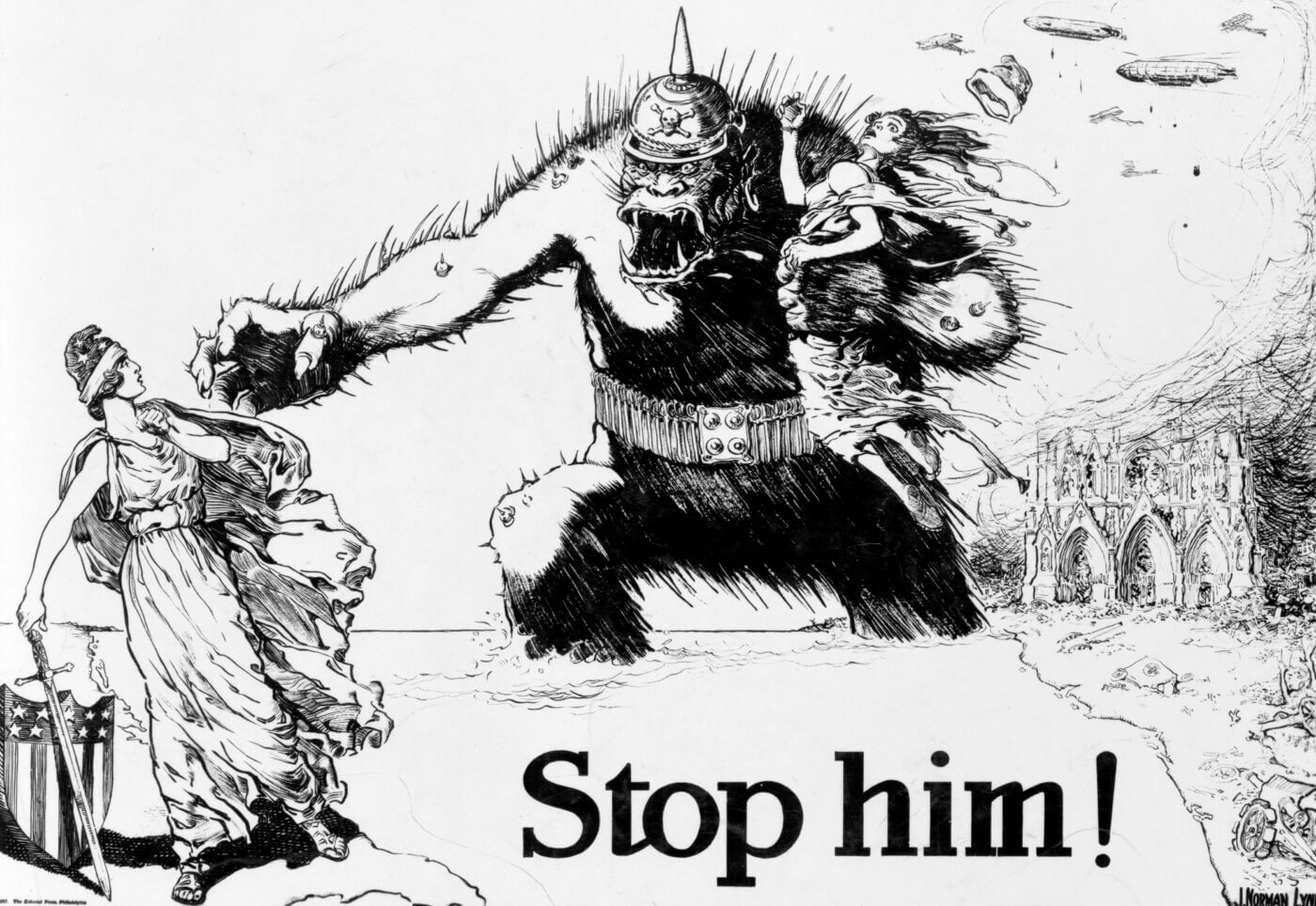
“The Mad Brute of Germany” threatens Lady Liberty across the Atlantic. Image: Library of Congress
More Americans became millionaires during this period than in any other time in U.S. history to that time.
U.S. forces held Veracruz until November 23, 1914.
But after the offensives sputtered, and the trenches were dug, the horrible meatgrinder began.
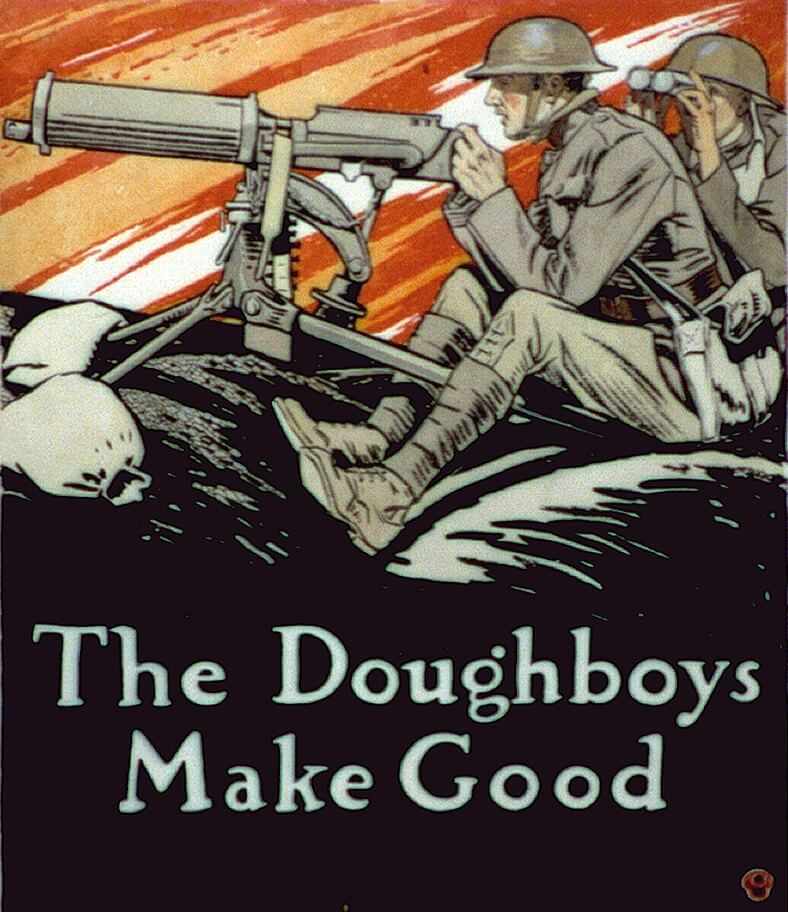
More weapons, and most importantly more men were needed for the Allied cause.
By 1916, the casualty counts were growing exponentially.
As volunteers declined, conscription was introduced to fill the ranks.
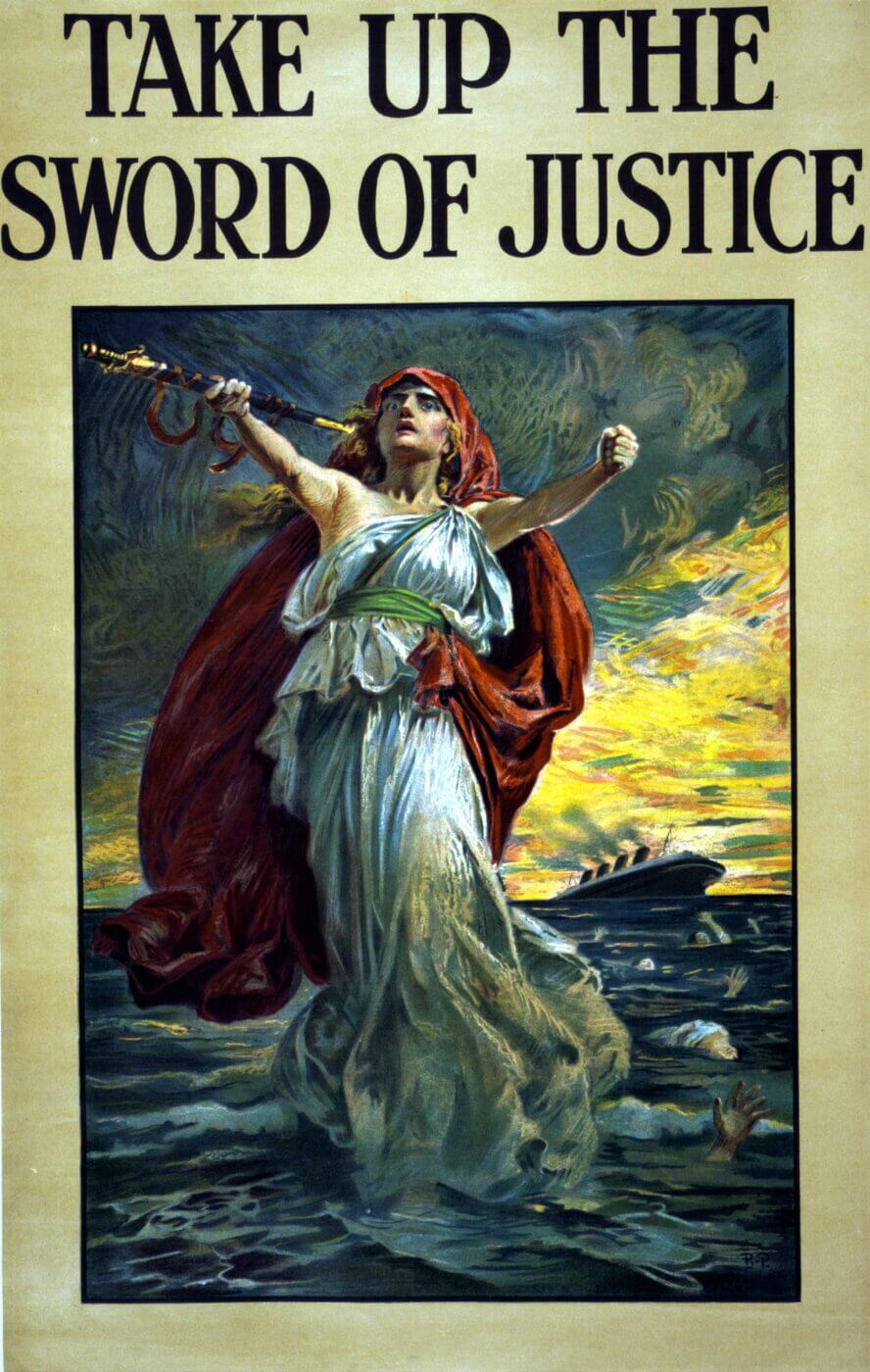
Lady Liberty offers the Sword of Justice to motivate Americans to avenge reported German war crimes. Image: Library of Congress
Within the British Isles, conscripts were only culled from England, Scotland and Wales.
Irish men were not conscripted.
The British Government passed the Military Service Act during 1916, and conscription continued until 1919.
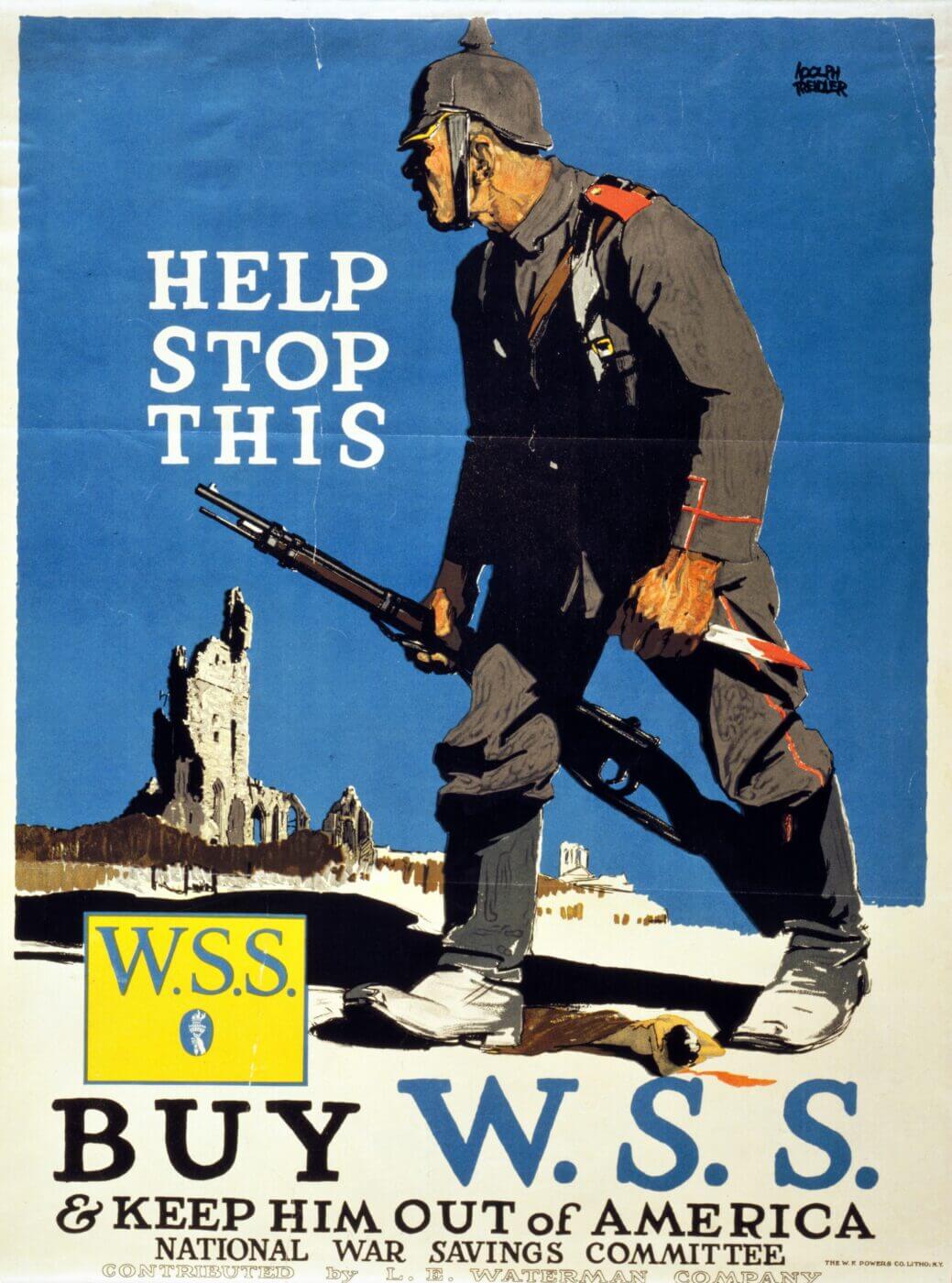
Americans are urged to invest in War Savings Bonds to prevent perceived German savagery from reaching America. Image: Library of Congress
Married men were initially exempt from conscription.
Very soon however, precious few exemptions to military service were allowed.
Ultimately, almost all British men, ages 18 to 51, were subject to conscription.
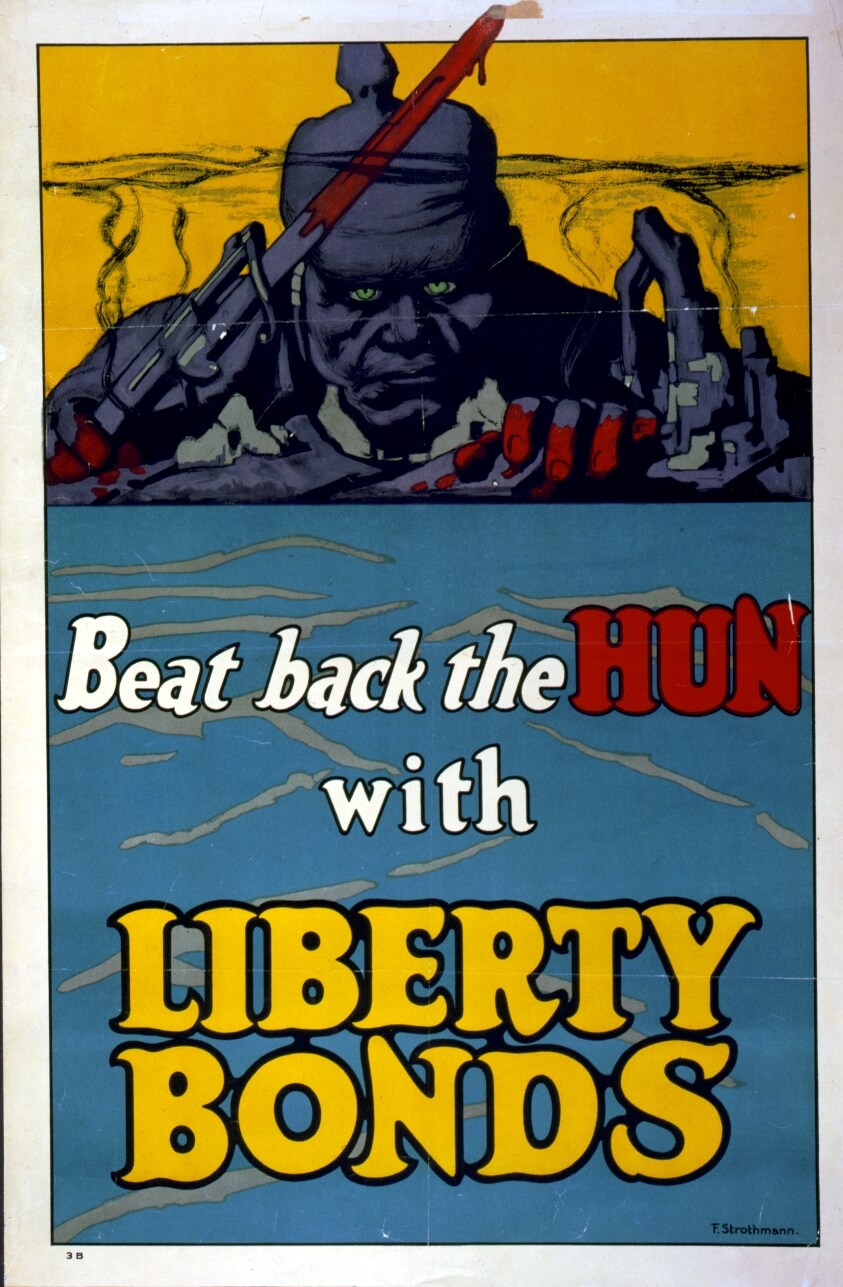
Portrayals of German troops became blood-soaked and other-worldly. Image: Library of Congress
In that light, President Wilson chose to turn to nationwide conscription.
No other objections, religious or political, were allowed.
A few artists illustrated Germany and the Kaisers government as a murderous ape, hell-bent on violating Lady Liberty.
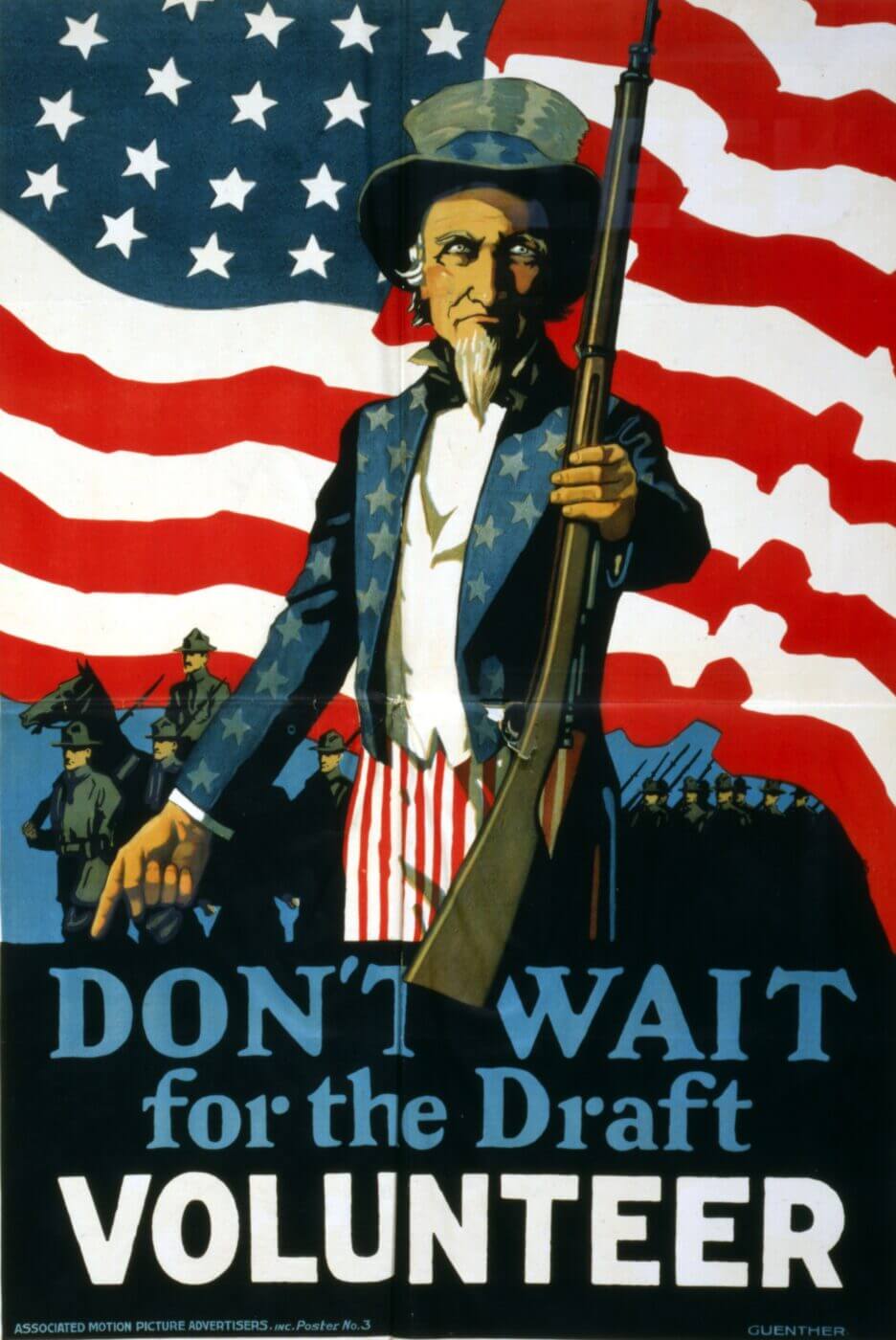
Uncle Sam offers an M1903 Springfield rifle for those ready to volunteer. The Committee on Public Information worked hard to promote enlistment. Image: Library of Congress
However, few Americans ever believed that German troops would cross the ocean to invade the United States.
Germanys use of unrestricted submarine warfare was condemned as murderous piracy by most nations.
The Allies advanced many tales of German barbarism in their occupied territories, particularly Belgium.
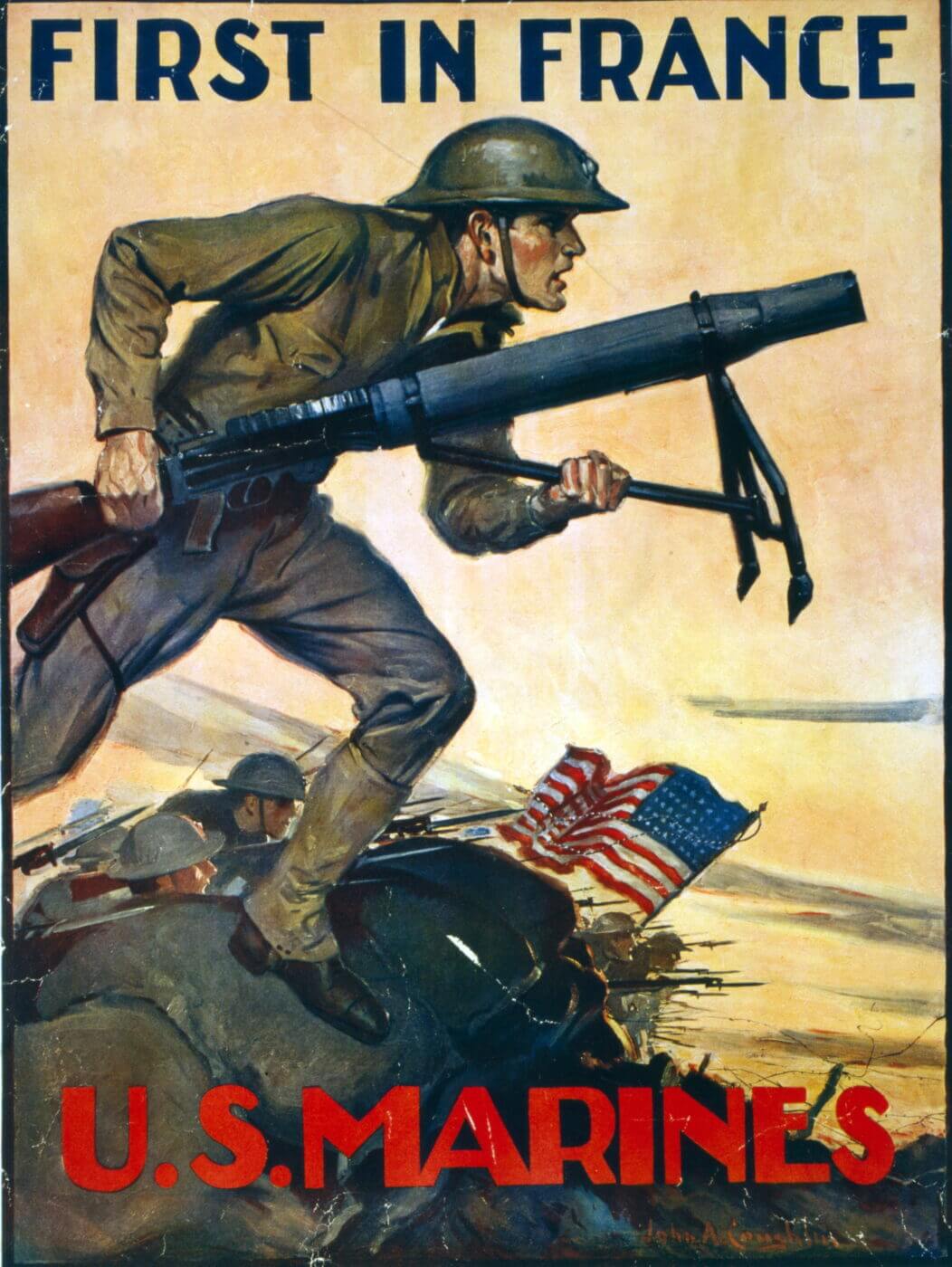
The Marines arrived in France with their .30-cal. Lewis machine guns, but these were replaced with French Chauchat automatic rifles in 8mm Lebel. Image: Library of Congress
As 1917 began, new propaganda campaigns were developed to help convince America to join the fight against Germany.
Images of German troops were shown in human form, albeit hulking, brutish and blood-soaked.
Keep him out of America became a theme.
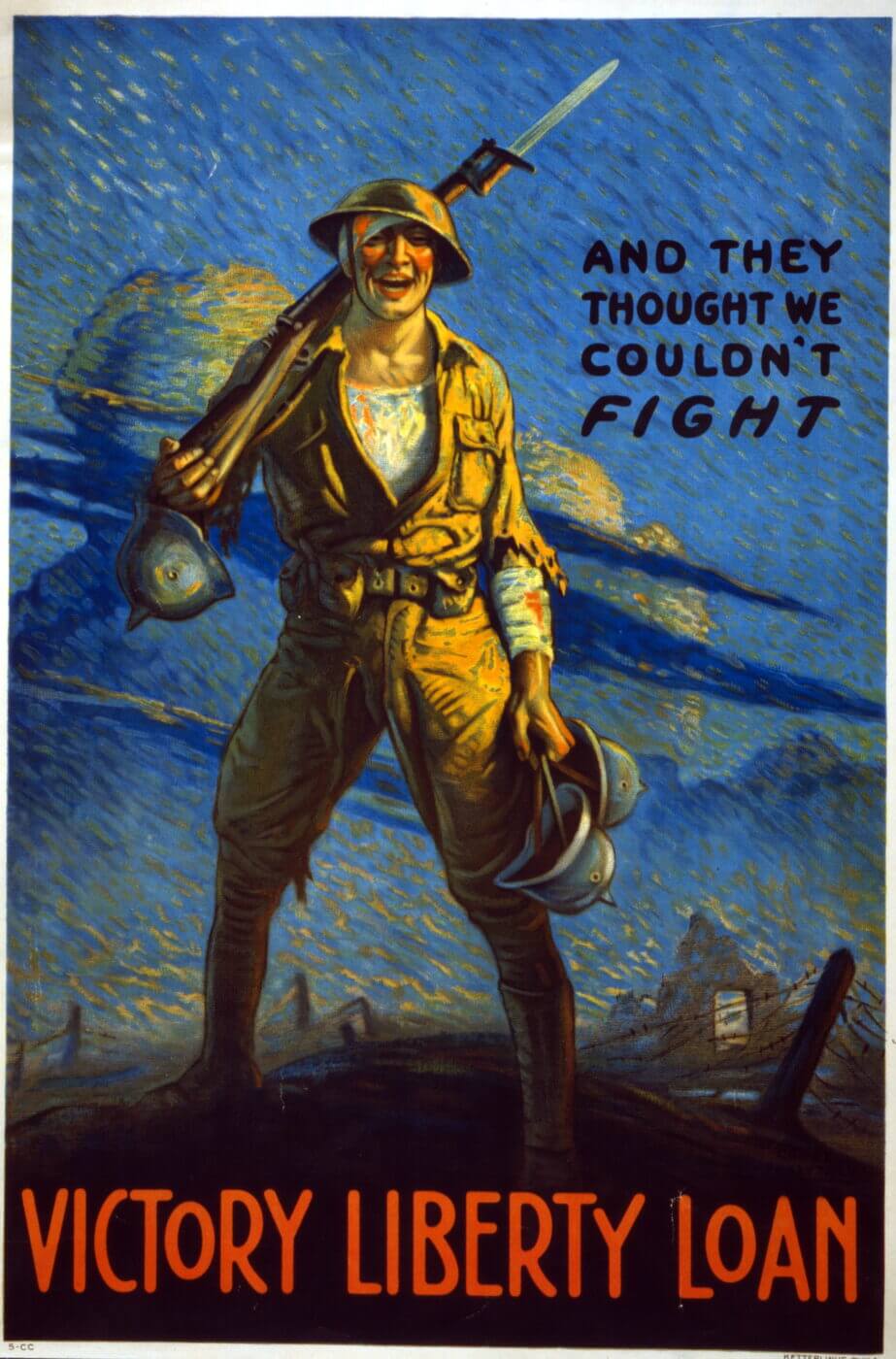
American troops quickly earned a reputation for being hard fighters, among friend and foe alike. Image: Library of Congress
Volunteerism and sacrifice were important subjects.
So too was the acceleration of war material production.
During 1918, poster art displayed the symbols of American pride and the products of American ingenuity and technology.
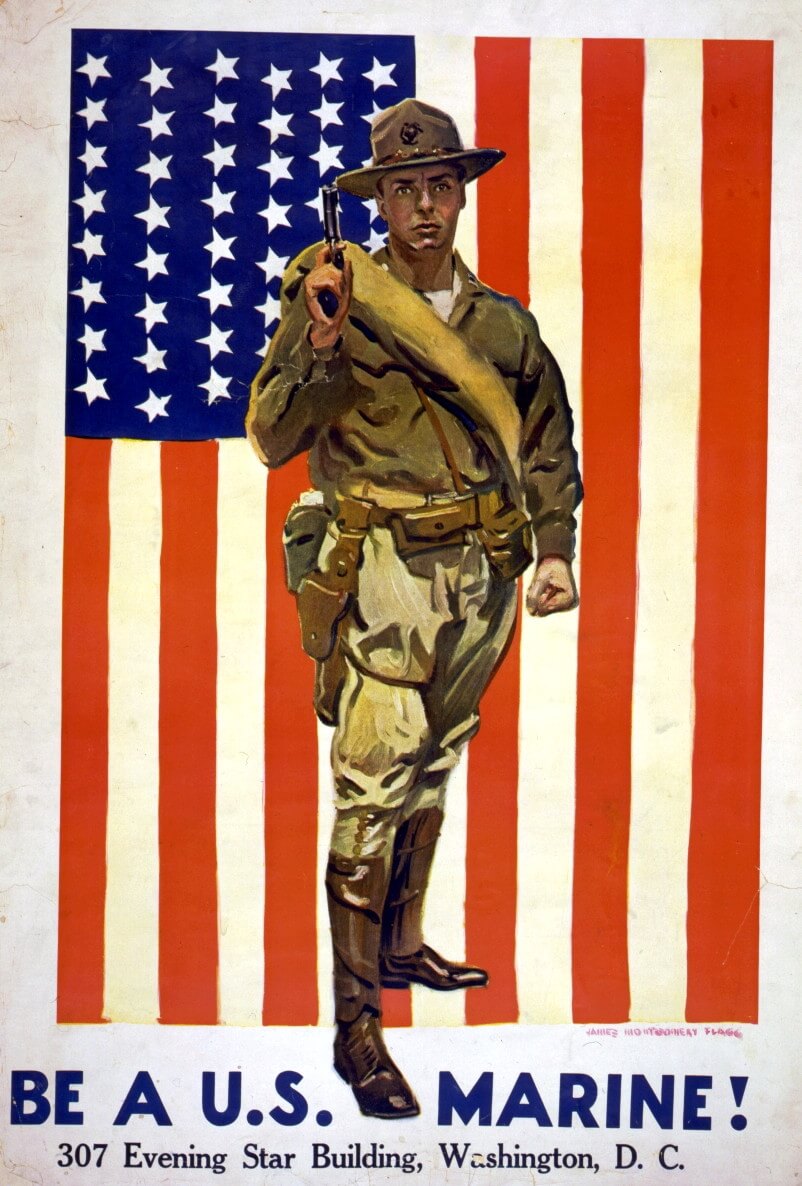
During World War I, the Marines came to be perceived as America’s elite fighting force. Image: Library of Congress
And once again, America would stand ready to help defend democracy.
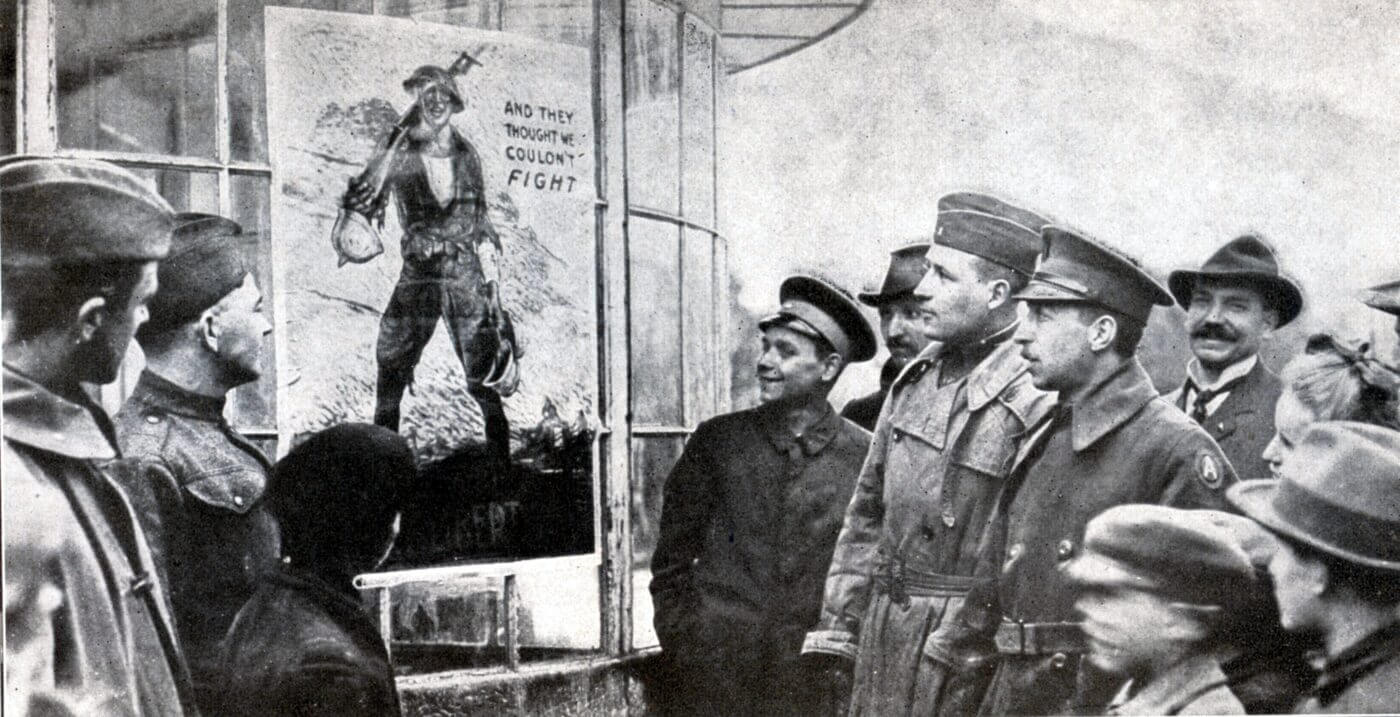
U.S. troops and French civilians look over a war poster during late October 1918. Image: Library of Congress
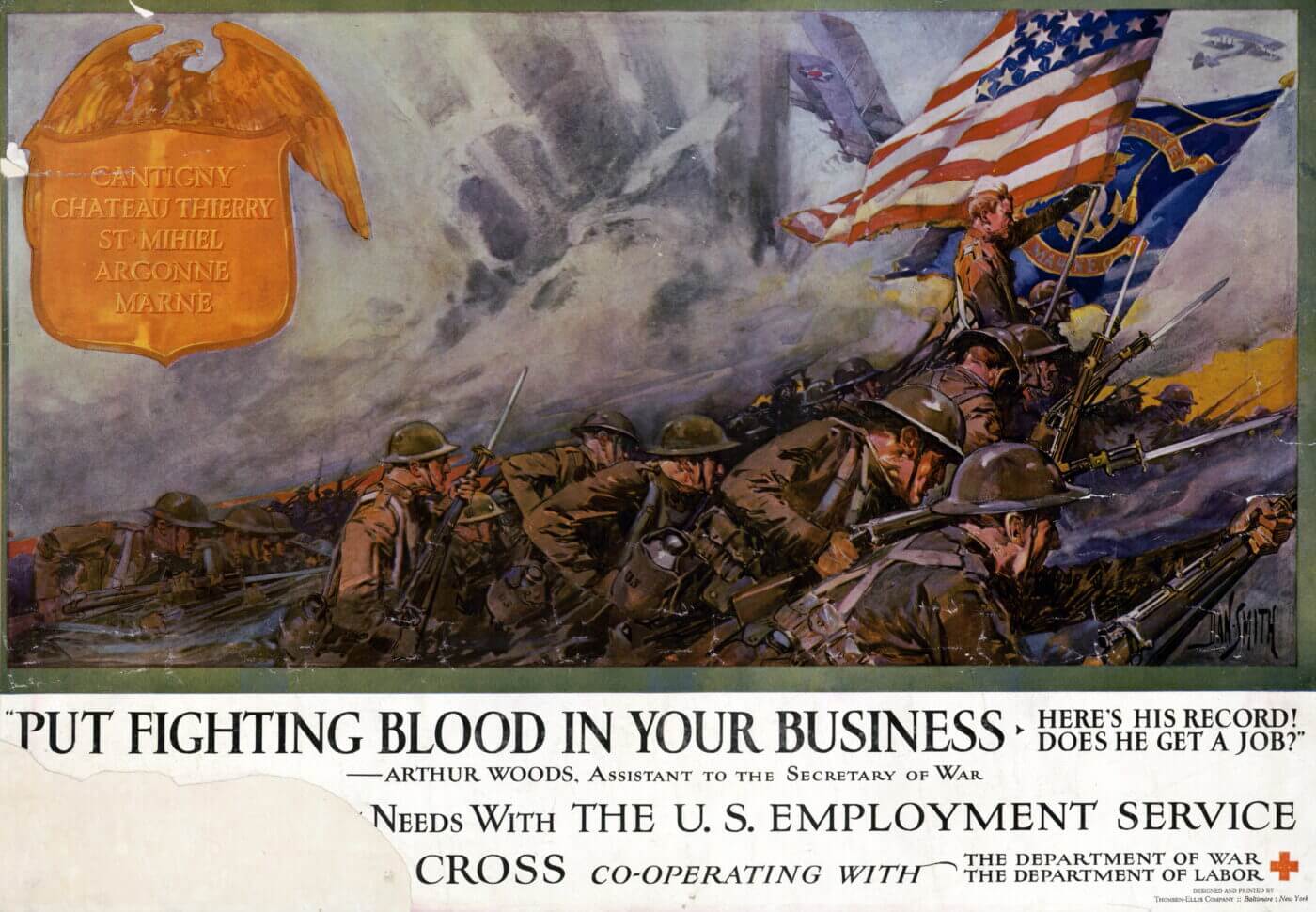
This poster addresses a significant issue more than a century old, promoting veterans with the battle honors so hard-won in the Great War. Image: Library of Congress
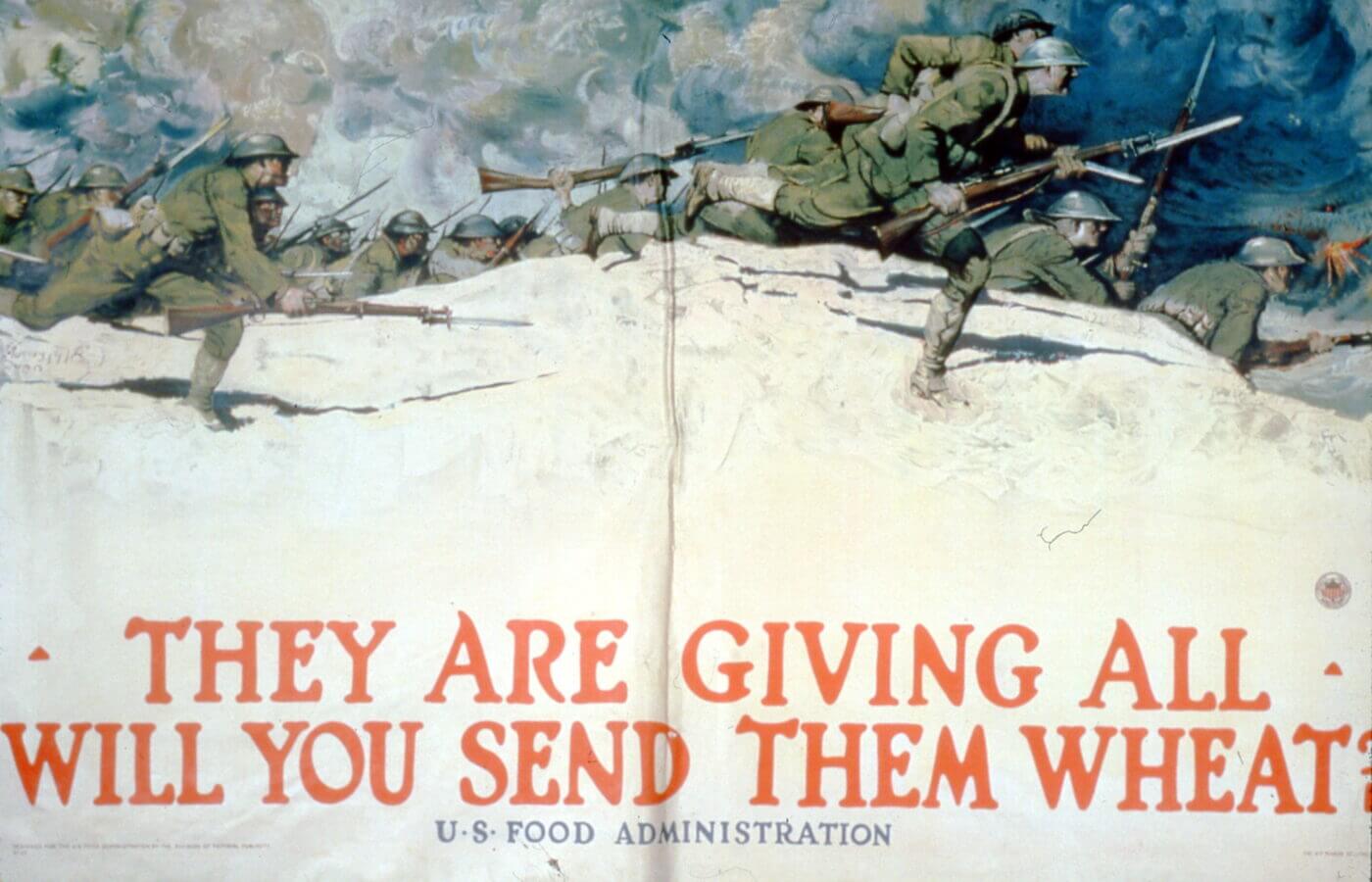
An Army fights best with a full belly, and Americans saw to it that the U.S. military had the best provisions in the world. Image: Library of Congress
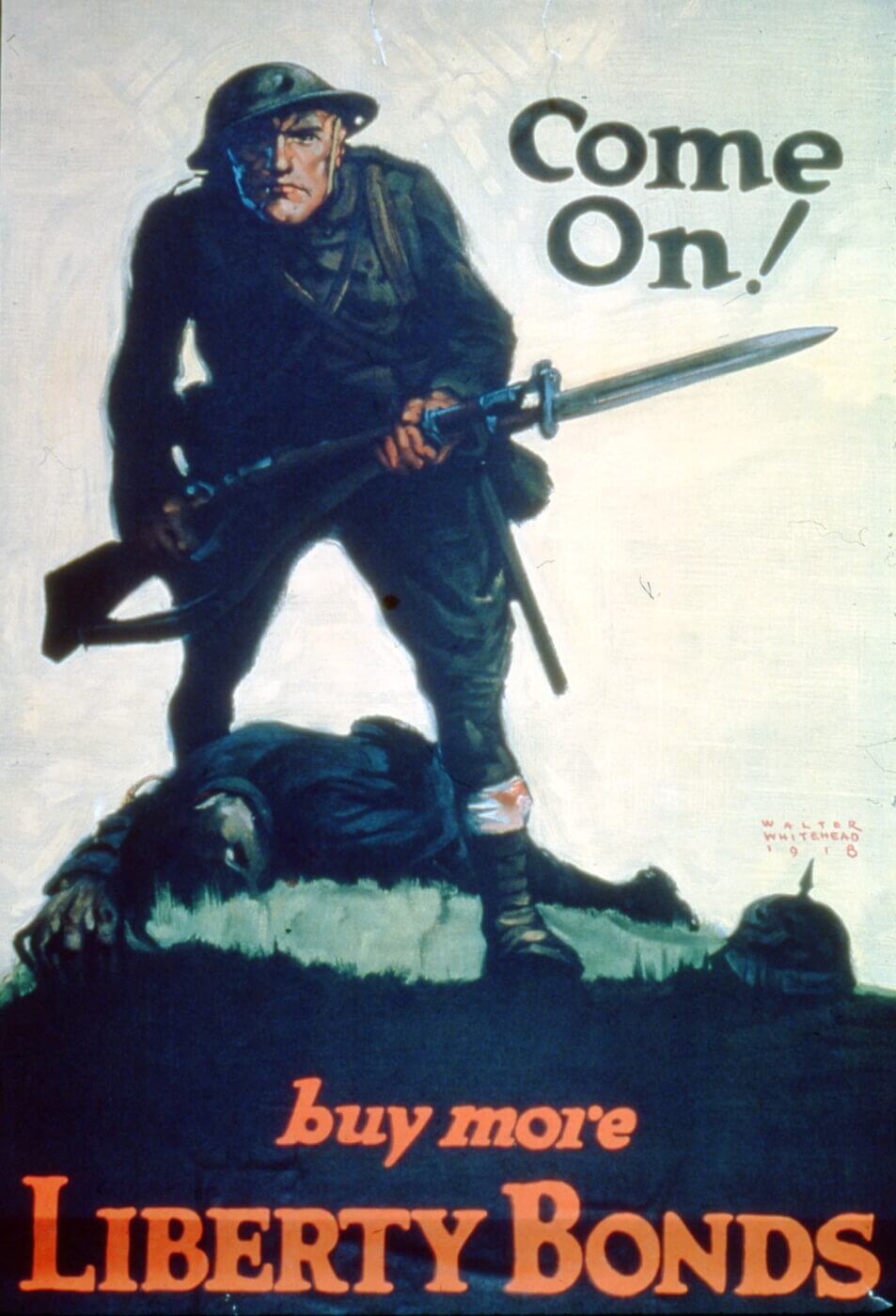
The artist gave this Doughboy a strong sense of urgency. In the end, Liberty Bonds raised nearly $17 billion for the U.S. during World War I. Image: Library of Congress
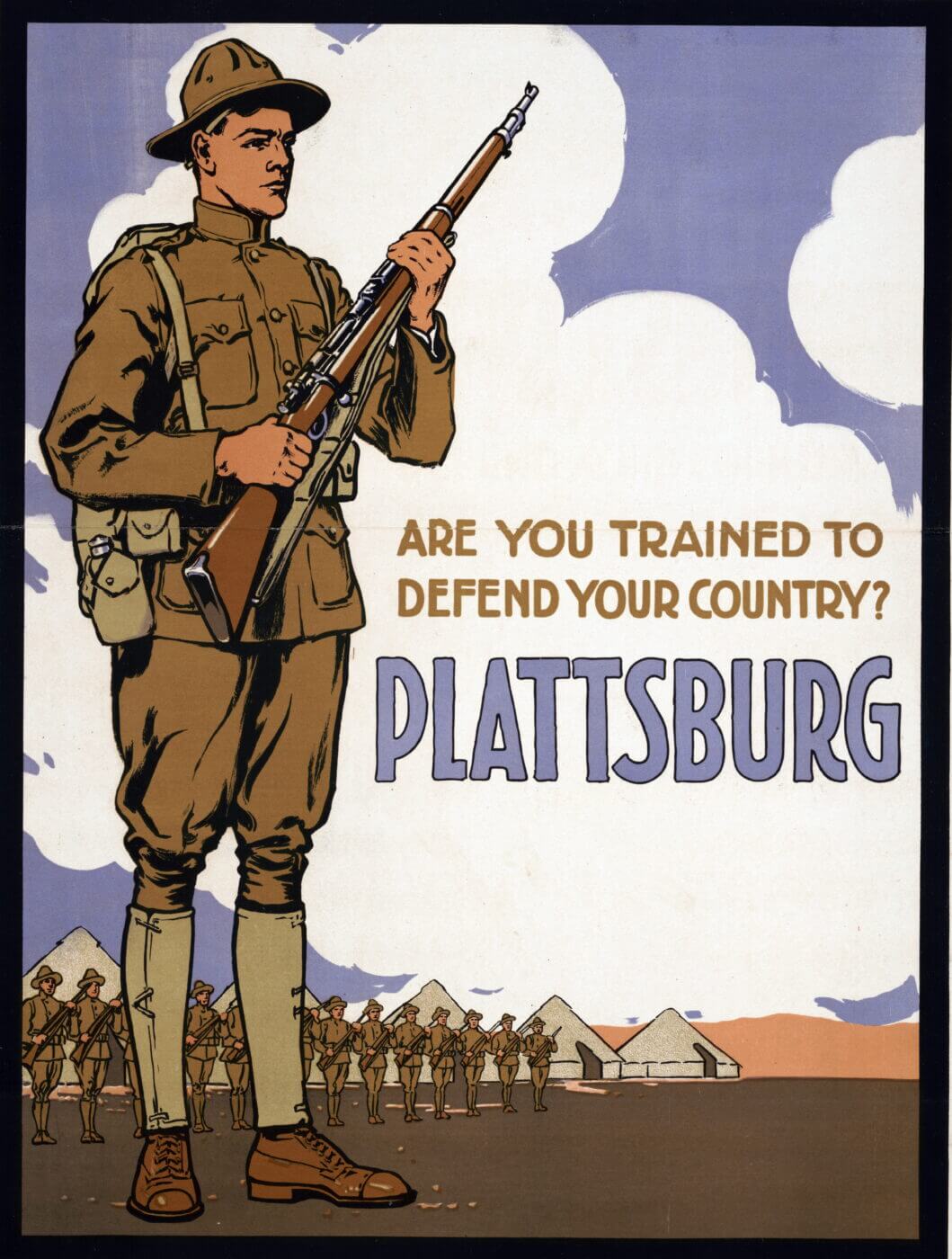
A recruiting poster, customizable by community, featuring the M1903 rifle. Image: Library of Congress
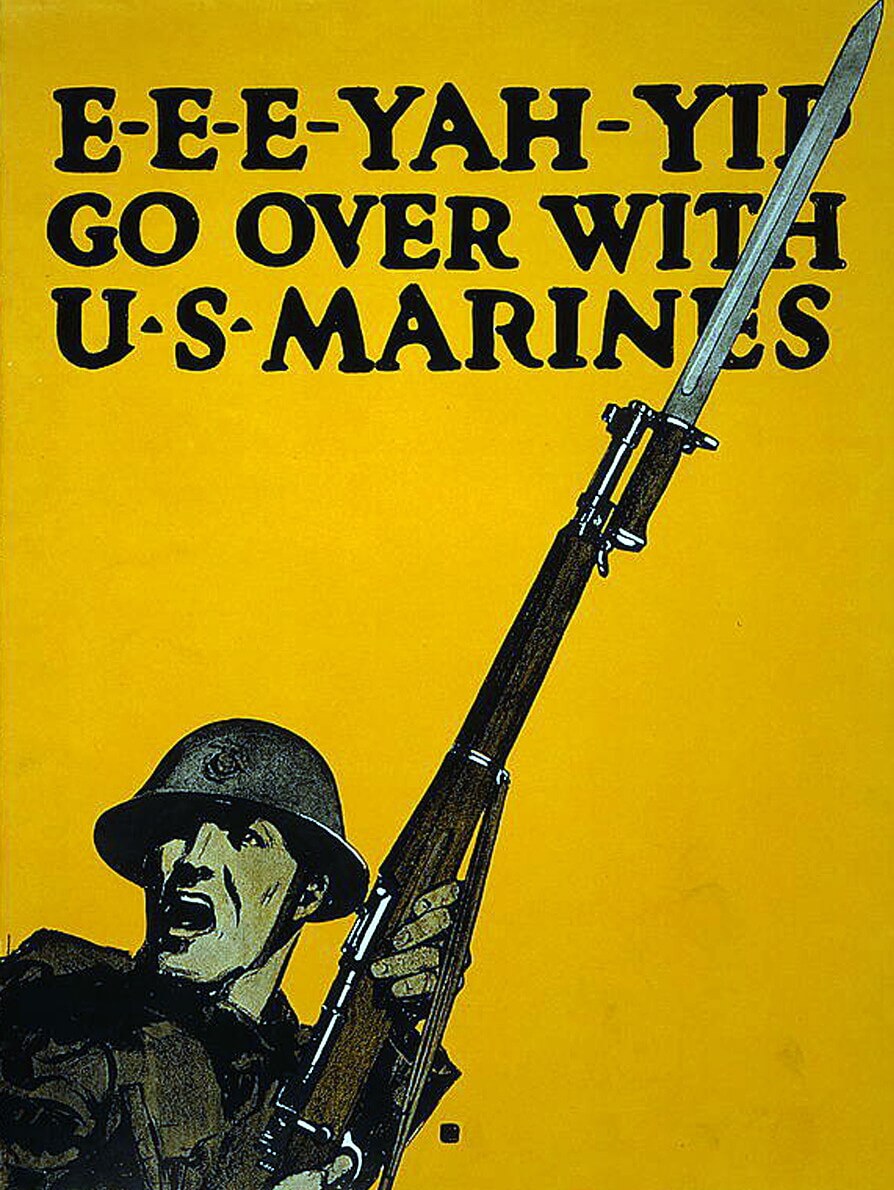
The Marines created a strong recruiting campaign during World War I, frequently featuring the M1903 rifle. Image: Library of Congress
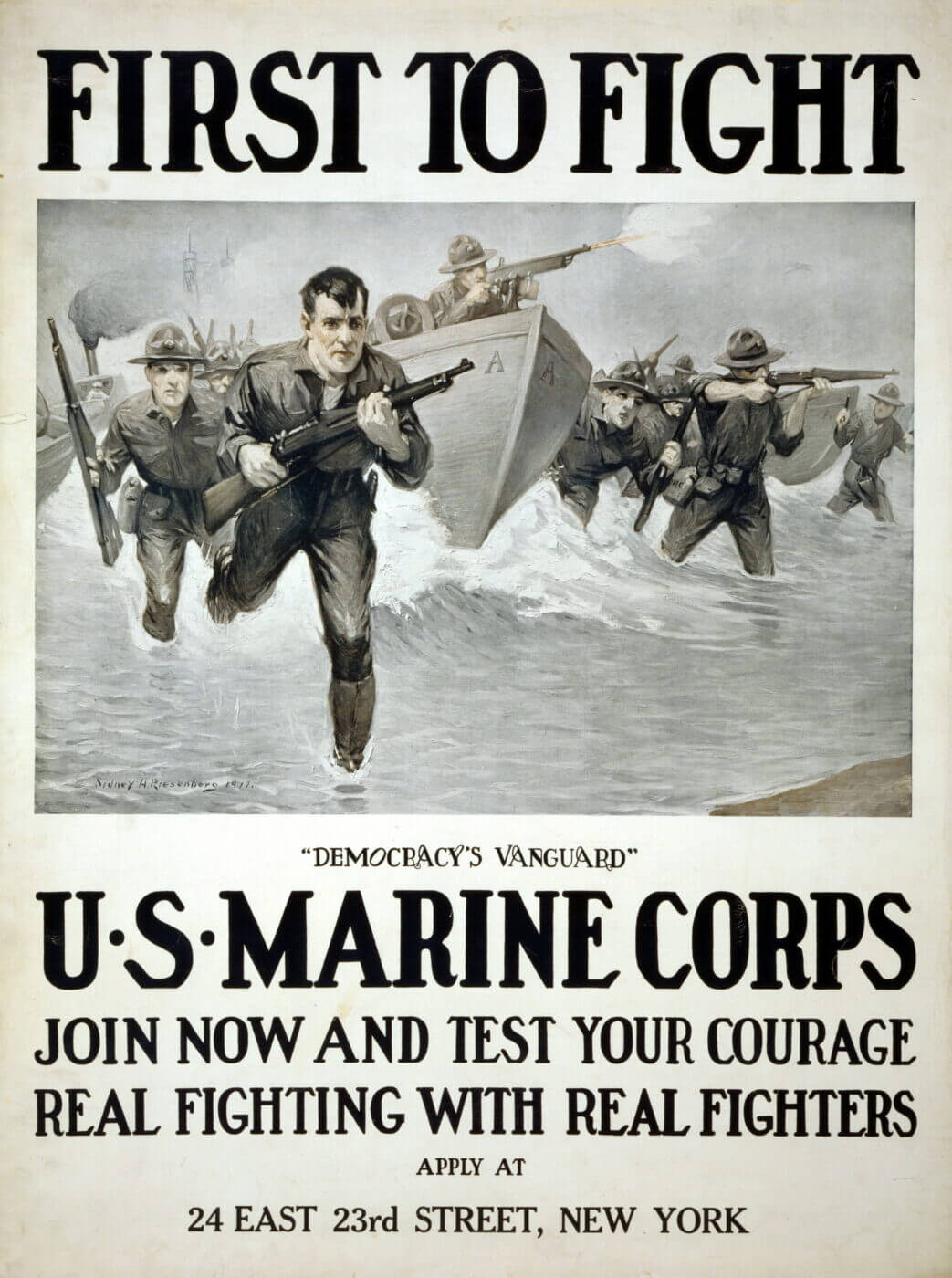
America’s soldiers from the sea: a World War I impression of a Marine amphibious landing. Image: Library of Congress
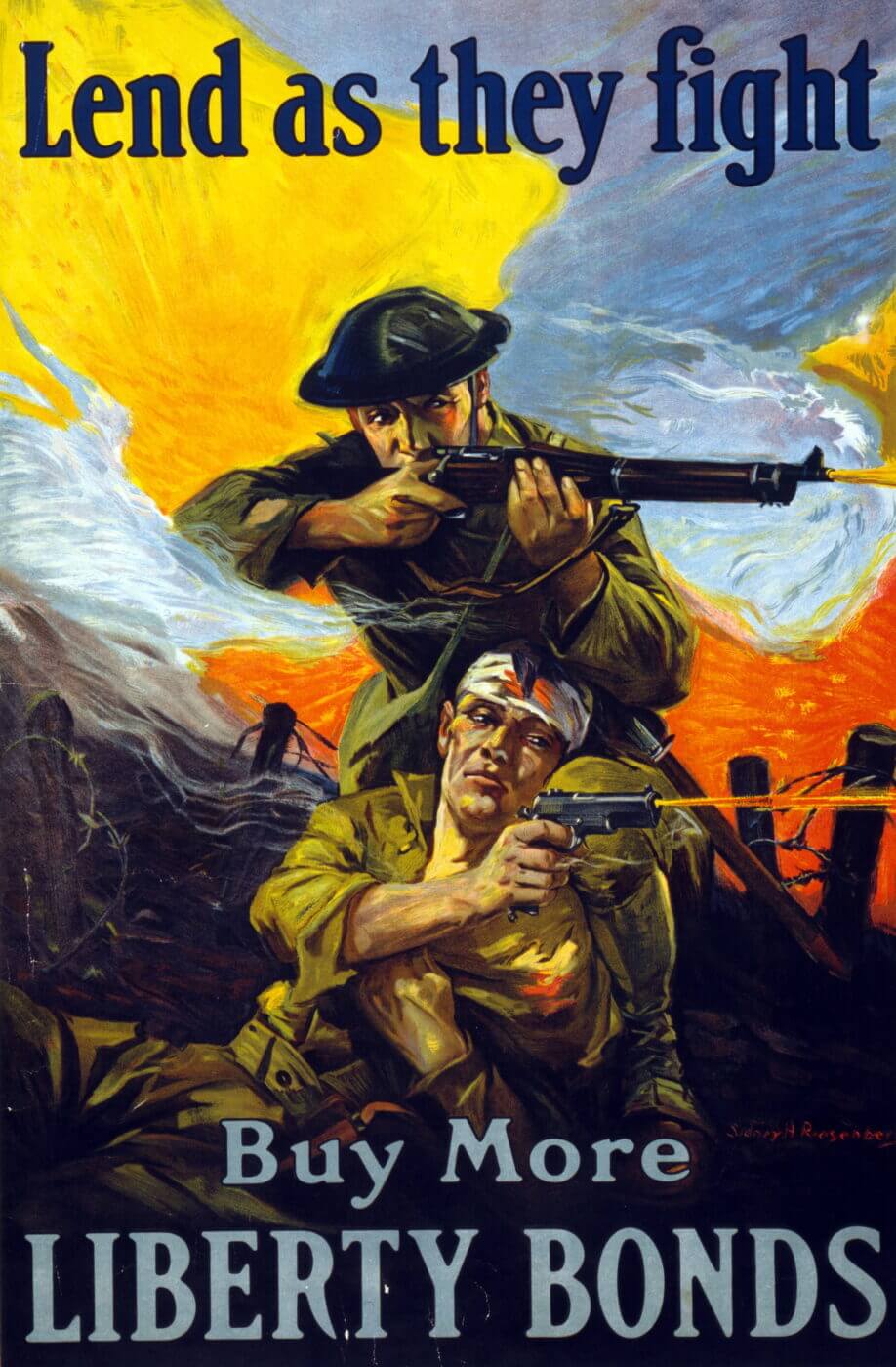
The .45 caliber M1911 pistol made its debut as a popular icon of American firepower during World War I. Image: Library of Congress
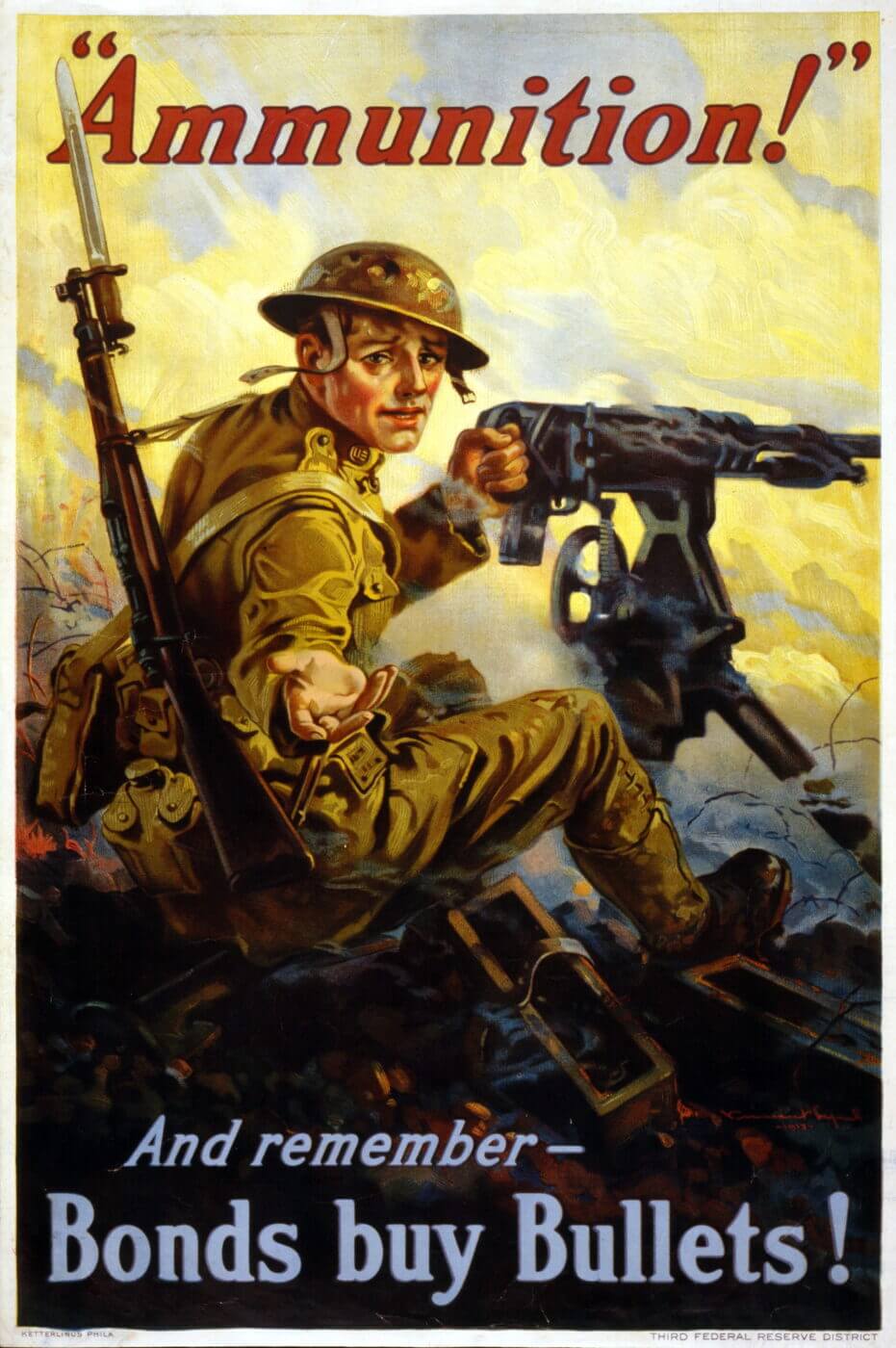
A highly detailed poster featuring not only the M1903 Springfield rifle, but also the French M1914 Hotchkiss machine gun. Image: Library of Congress
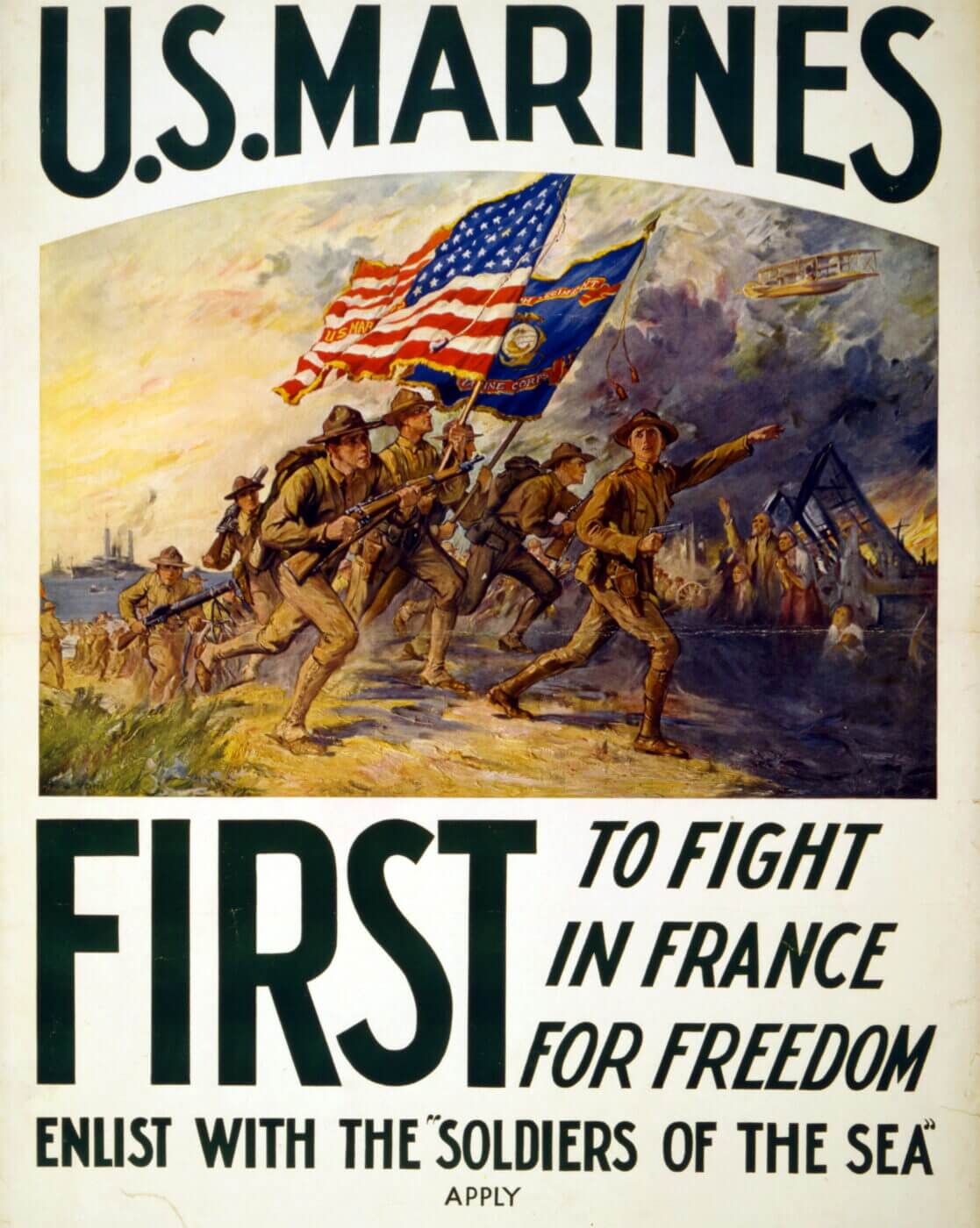
World War I saw the growth of the U.S. Marine Corp’s legendary status. Image: Library of Congress

The M1903 rifle and a hot cup of coffee: the YMCA did solid work for American troops at home and abroad. Image: Library of Congress
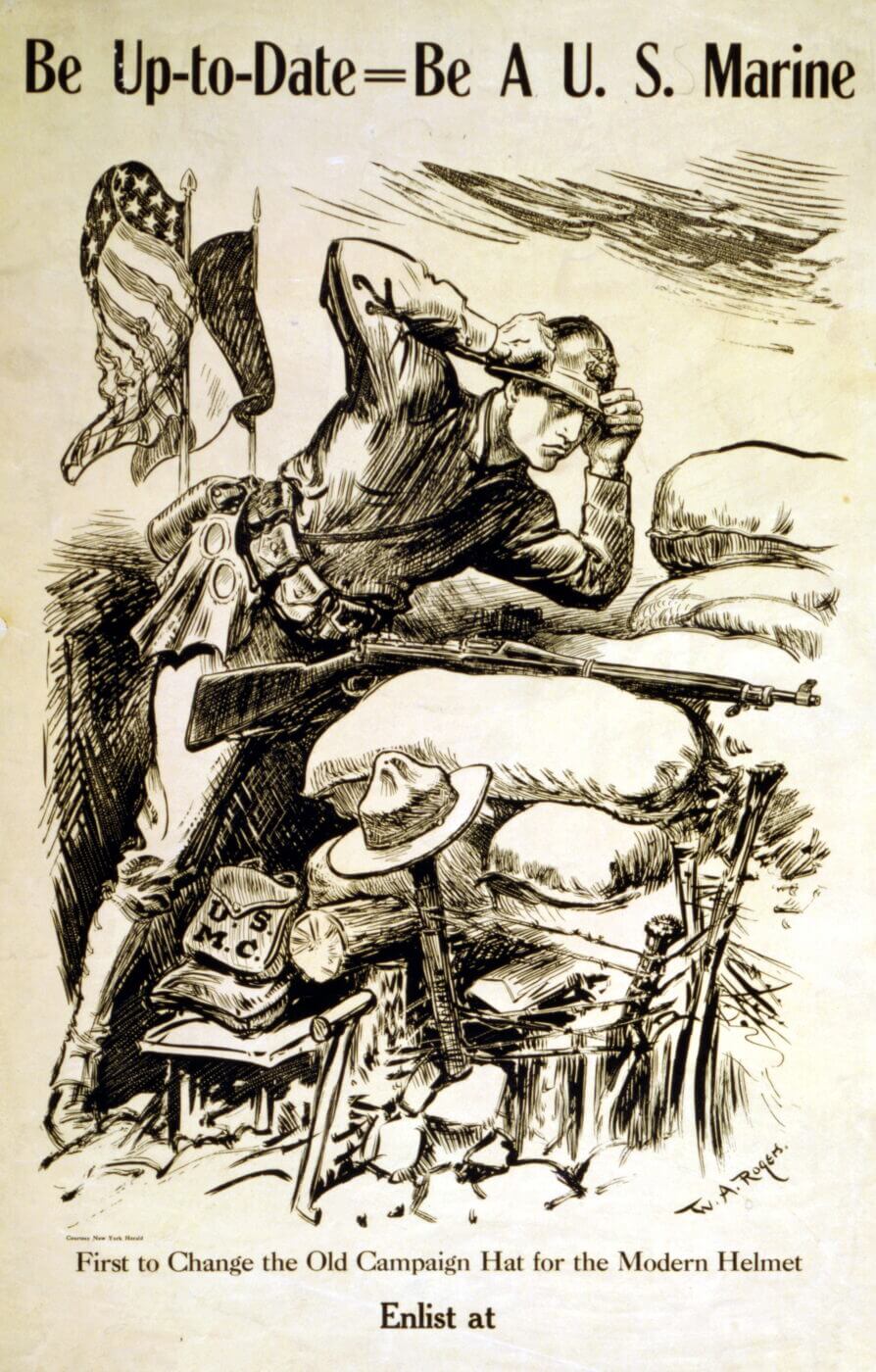
Interesting detail describing U.S. Marines as trading in their campaign hats for a “modern helmet” — in this case a French M15 Adrian helmet. Image: Library of Congress
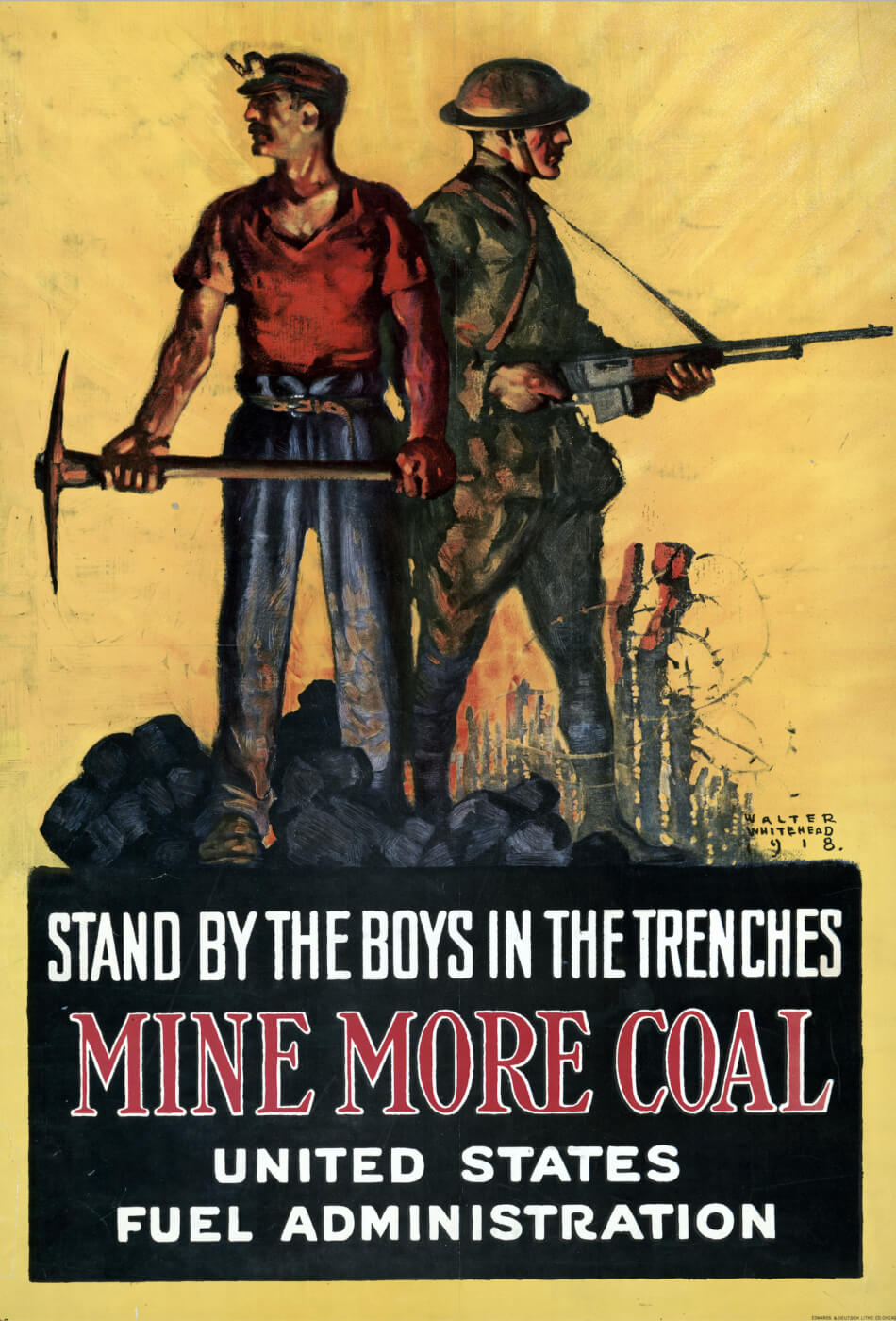
The Browning Automatic Rifle makes a rare appearance in this poster. Image: Library of Congress
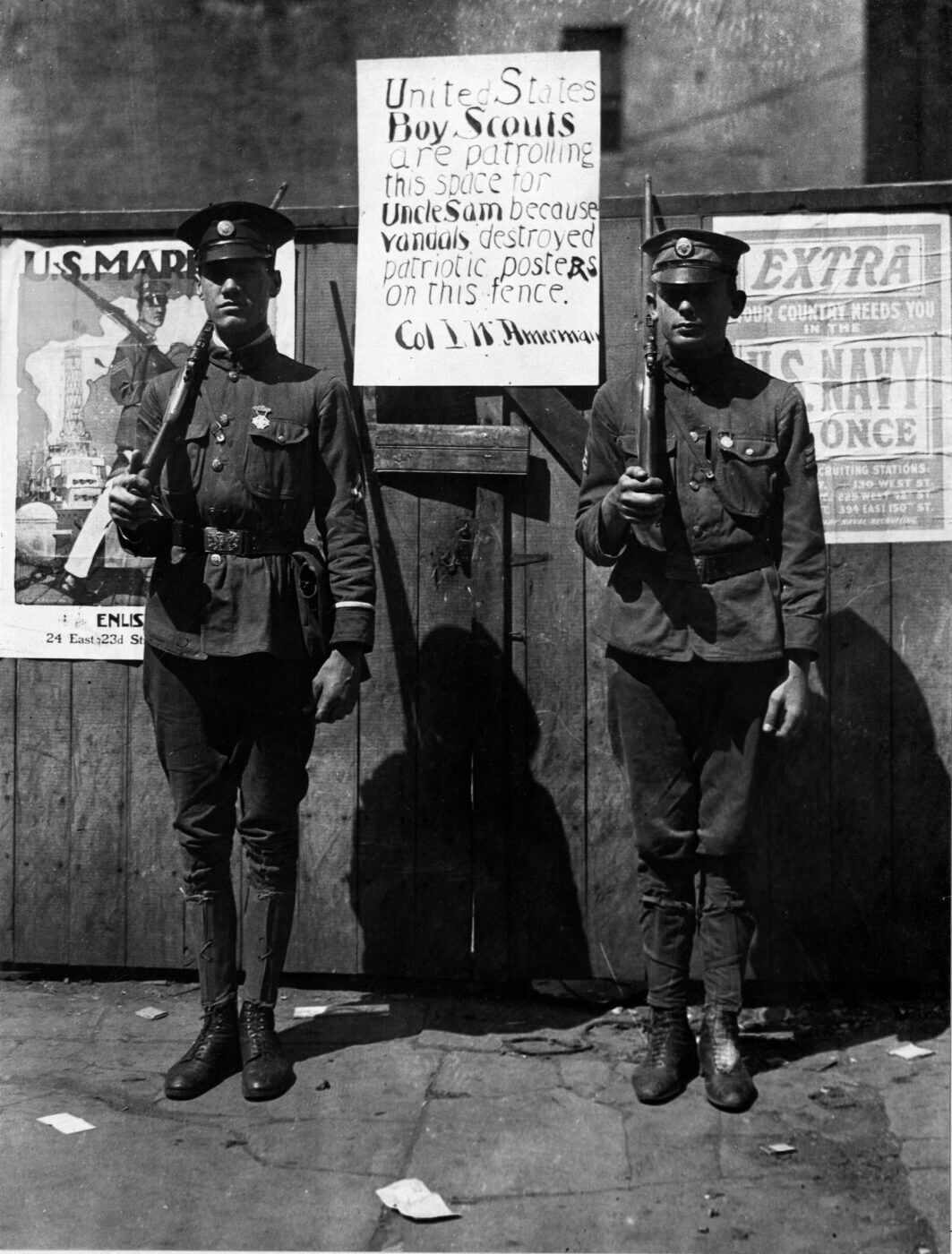
These armed Boy Scouts are detailed to protect recruiting posters in New York City from attack by anarchists and pro-German agitators. Image: U.S. National Archives




